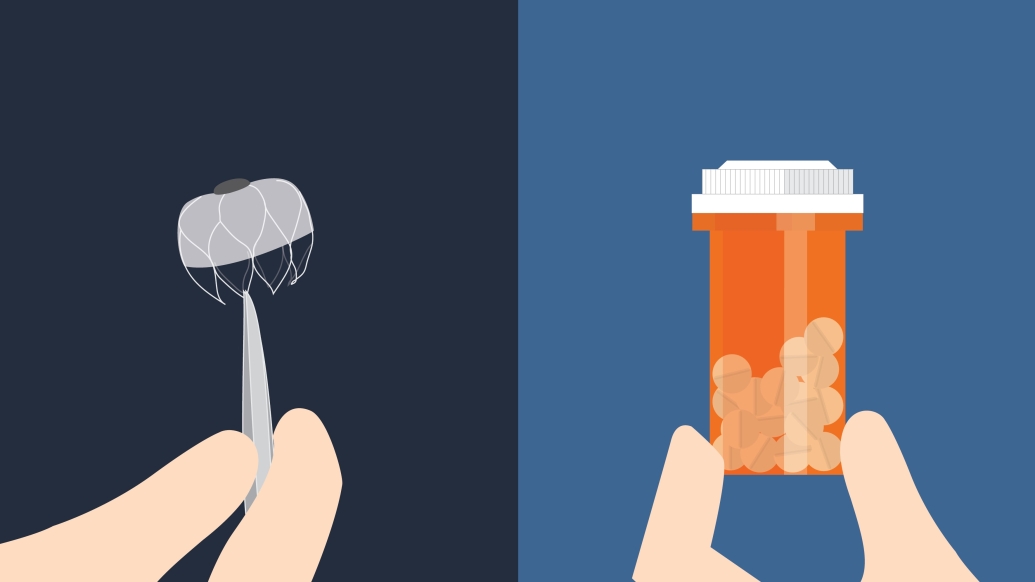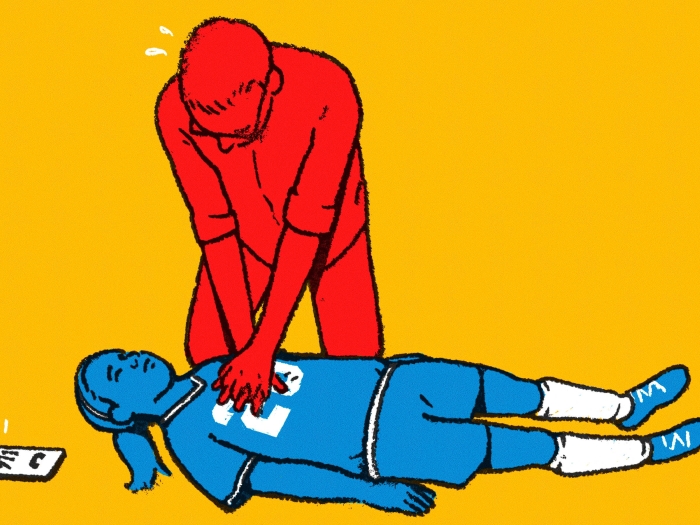New implant technology designed to thwart stroke shows promise for patients with atrial fibrillation who cannot take anticoagulants. Here’s what potential recipients need to know.
7:00 AM
Author |

Patients with nonvalvular atrial fibrillation (Afib), the most common type of abnormal heart rhythm, are at increased risk of stroke and may need a blood-thinning anticoagulant to reduce the risk. However, some patients who need blood thinners may not be able to take them because of a high risk of life-threatening bleeding.
MORE FROM MICHIGAN: Sign up for our weekly newsletter
For such patients with nonvalvular atrial fibrillation who also are at high risk for severe bleeding complications, a quarter-sized device known as the Watchman might be a viable alternative. The tool blocks off a section of the heart commonly linked to blood clots, preventing any clots from escaping into the bloodstream.
"This is certainly something that can and should be considered in carefully evaluated, appropriate patients with nonvalvular Afib who need an anticoagulant but also are at high risk for severe bleeding complications," says Hakan Oral, M.D., a cardiologist at Michigan Medicine's Frankel Cardiovascular Center.
Available internationally since 2009, the Watchman has been approved since 2015 by the Food and Drug Administration. The Frankel center is one of the first facilities in the United States to use the device.
How the Watchman works
The lightweight, umbrella- or parachute-shaped device is inserted by catheter through a recipient's blood vessel accessed through the groin. It is designed to seal off the heart's left atrial appendage (a sacklike pouch within one of the organ's two upper chambers; the left atrial appendage is where Afib patients most often develop blood clots). A person's heart tissue will grow over the permanent implant in time.
The devices are available in several sizes to best fit a recipient's body.
Prior studies demonstrated that the Watchman was noninferior to the blood thinner warfarin, leading to FDA approval.
But, as the FDA notes in a Watchman information guide, the device targets only one potential source of trouble. It cannot thwart other causes of stroke such as high blood pressure or narrowing of blood vessels to the brain.
Eligible candidates
The Watchman isn't meant to be a universal alternative to anticoagulants. Only carefully chosen patients should receive it, Oral says. "If a patient has a high risk of bleeding while on blood thinners, then it is a very good option."
SEE ALSO: Clearing Up Confusion About Blood-Thinning Meds
Still, patients must be able to tolerate warfarin short term to qualify. A patient must also be at an increased risk for stroke and systemic embolism based on CHADS2 or CHA2DS2-VASc scores — numerical scales used to evaluate stroke risk in Afib patients.
A potential recipient will undergo a transesophageal echocardiogram (TEE) to ensure no existing clots are present and to determine whether the appendage is compatible with one of the available device sizes and shapes. Clots, if detected, will need to be treated with blood thinners before proceeding.
The Centers for Medicare and Medicaid Services announced in February 2016 that the Watchman will be covered, as long as patients meet specific criteria.
Living with the Watchman
Conducted under general anesthesia, the minimally invasive procedure doesn't typically involve a hospital stay of more than a day. Patients should be able to return to normal activities shortly after the procedure.
Extended follow-up, though, is involved. A recipient can expect subsequent TEEs at 45 days and 12 months after surgery to ensure that the Watchman is working properly and the left atrial appendage remains closed.
Patients also need to continue a warfarin regimen for 45 days.
"After a successful implant confirmed at 45 days with a TEE, the patient is taken off warfarin and put on a different type of blood thinner known as Plavix, along with aspirin, for another four and one-half months," Oral says. "The patient is then maintained on aspirin for life."
Like any other procedure, Oral says, the Watchman device has its own risks. "Therefore, patients must be carefully chosen."
Want to know which option is right for you? Call the Frankel Cardiovascular Center at 888-287-1082 for more information or to make an appointment.

Explore a variety of healthcare news & stories by visiting the Health Lab home page for more articles.

Department of Communication at Michigan Medicine
Want top health & research news weekly? Sign up for Health Lab’s newsletters today!





